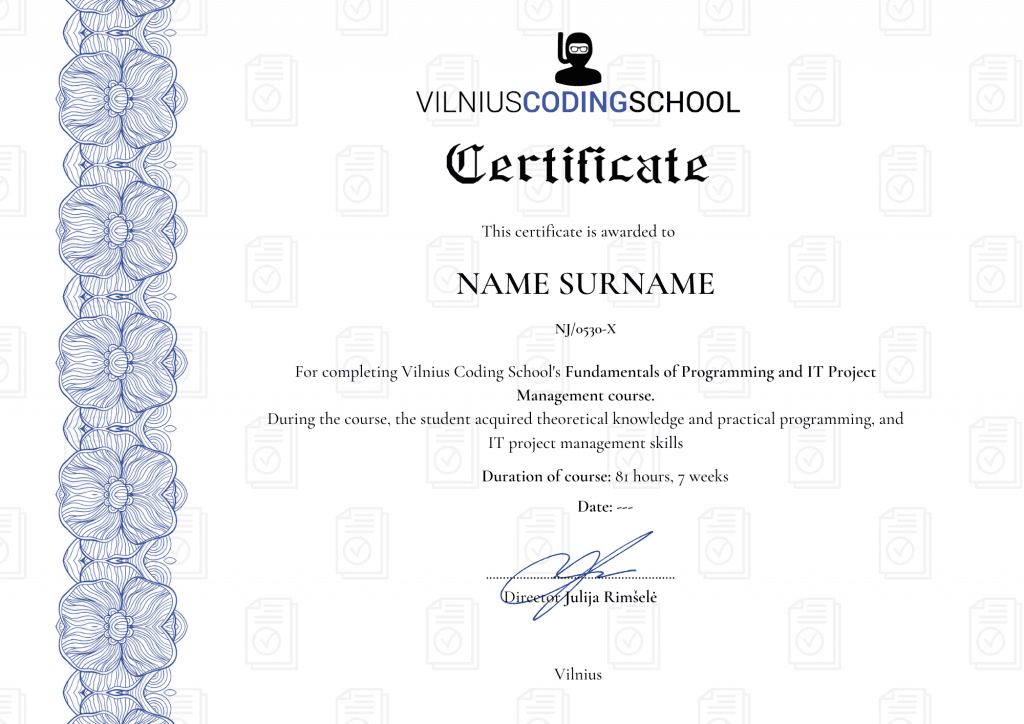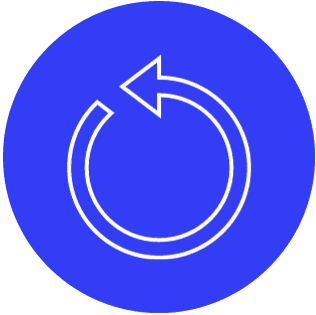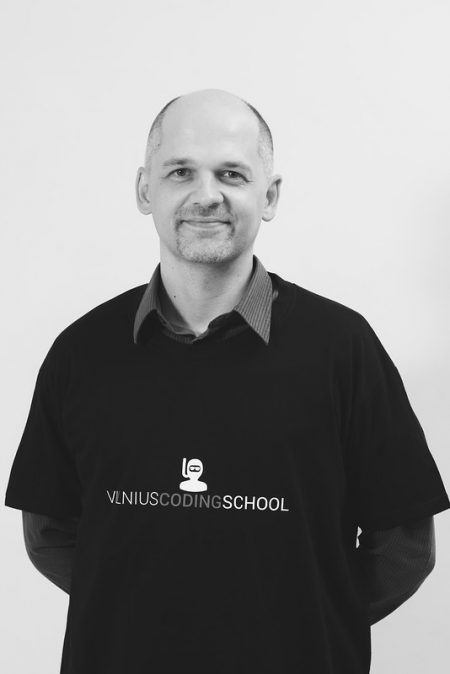Planned training:
April 24
May 20
June 19
July 24
August 21
September 18
October 23
November 20
December 18
Price:
2400€
(When paying the full amount, a 25% discount is applied immediately)
![]()
![]()
![]()
![]()
![]()
![]()
These full-time trainings are balanced for those who are not working, but are suitable for all people who want to understand and learn how to create WEB products (websites or internal company management systems...
What after training?
After these trainings, students are invited to continue participating in the school's mentoring program free of charge: for a whole month, if questions arise, they can both contact the school's lecturer and use the school's classrooms for independent study.
For our students who want to start a career in the IT field, the Career Center will help them search for an internship or job, provide all the necessary information about job interviews, help them prepare a strong and attractive CV and LinkedIn profile, which will distinguish you from other candidates during the selection process. We constantly share job and internship offers and advise on all issues related to employment. You will not be alone during your job search, our professional team of consultants and mentors will provide comprehensive assistance to achieve your goal of successfully starting a career in the IT field.
Vilnius Coding School cooperates with more than 250 companies - partners that can provide career opportunities for graduates of our school. Even 85 percent everyone who has finished school and applied for a job is successfully employed.
Training program
What is a web page made of?
– Concepts of frontend and backend. Database definition.
– What goes into the frontend and what goes into the backend, what is stored in the database.
– How these parts relate to each other.
HTML
- Work environment.
- What is HTML and what is its role on the web?
– Syntax of tags (elements and their attributes).
– The structure of the web page (doctype, html, head, body, … tags).
– Rules for code neatness. Comments.
- Headlines.
- Paragraphs. Format text using bold, italic, underline, and more
formatting methods.
– References (absolute and relative).
- Pictures. Their insertion, size adjustment, alternative text description,
making a clickable picture.
- Tables. Creating a table. Table edges, rows, cells, header cells, cells
blurring
- Lists. Unordered and ordered lists. List within a list / multi-level lists.
- Forms. Purpose, description, fields of the forms. Text, number, file and other field types,
their attributes, use.
– Useful text editor plugins.
– Other HTML elements.
CSS
- What is CSS?
– Syntax (selectors, declarations, parameters and values).
– Code tidiness and commenting.
– Selectors and their types.
- Where and how is the CSS code written?
- Browser developer tool.
– Colors and backgrounds, managing images and other html elements using css.
– Text formatting. Fonts, text sizes, styles, weights and other formatting issues.
– CSS box pattern (content, padding, border, margin).
– Behavior of elements in a row (display).
– Positioning of elements (position).
– Responsive web page layout (layout). Flexbox/CSS grid.
– Other CSS parameters. CSS preprocessors.
Using the CSS framework
- What is a CSS Framework? What options (Bootstrap / Tailwind, etc.) and what they might be
useful?
- How to prepare the project to use the CSS framework?
JavaScript
- What is JavaScript?
- Variables.
– Check conditions (if, switch).
– Loops (for, while, do while, for…in, for…of, forEach).
– Arrays, standard ES6+ functions (filter, map, find, etc.).
- Functions.
– DOM manipulation.
PHP
- Work environment.
- Code neatness. Code Commenting.
- Variables. Scope of variables. Data types.
– Information printing/output.
– Arithmetic operations.
– Check conditions (if, switch). Comparison and logical operators.
– Loops (for, while, do while, foreach).
– Arrays (indexed arrays, associative arrays).
– Functions (standard and additional functions).
– Form processing and validation.
- Integration of PHP and MySQL.
– Combining different PHP files (include and require).
- Introduction to PHP object-oriented programming (classes and objects).
MySQL
– Creating, viewing, updating, deleting databases and tables.
- Writing and executing SQL queries.
- What is WordPress? WordPress overview and environment preparation.
– Creating a WordPress theme and using templates.
Final project, delivery and billing
1. Communication skills
- Active listening
- Effective communication
- Dealing with difficult customers
- Creating a connection
2. Problem solving strategies
- Problem analysis and diagnostics
- Determination of solutions
- Troubleshooting methods
- Root cause analysis of the problem
- Latest problem solving technologies
- How to get feedback from managers
- Professional development
3. Time management and organization
- Prioritization of tasks
- Workload management
- Delegation and collaboration
4. Emotional intelligence
- Understanding and managing emotions
- Empathy and compassion
- Conflict resolution
- Stress management
5. How to learn more and faster and less
to forget
- 5 minute brain exercise
- Clear your "mental fog" with these 5
delicious brain foods - Learn a powerful memory technique to
you would never miss a meeting
Vilnius coding School CERTIFICATE
strong evidence that you are ready career ITEM!

Official certificate approved by the Education and Science Register
Recognized by the strongest Lithuanian and international companies
It proves that you have studied with the best specialists in your field
Reliable proof of acquired skills
Certificate issued by a company developing transparent activities in Lithuania
This certificate confirms that you attended at least 95% of the course lectures in real time with the lecturer, completed and defended the final thesis
Course lecturers
Discount system
Normal cost of training
2400 €
BY PAYING THE FULL AMOUNT IMMEDIATELY
we apply a 25% discount!
€ 1800
(Full price 2400 €)
Applies if you pay the full amount at the time of pre-registration
ALUMNI
we apply a 30% discount!
€ 1680
(Full price
2400 €)
Applies to all school graduates for all training and weekend workshops
RECOMMEND US TO A FRIEND
we apply a 25% discount!
€ 1800
(Full price
2400 €)
Applies if you come to study as a couple










